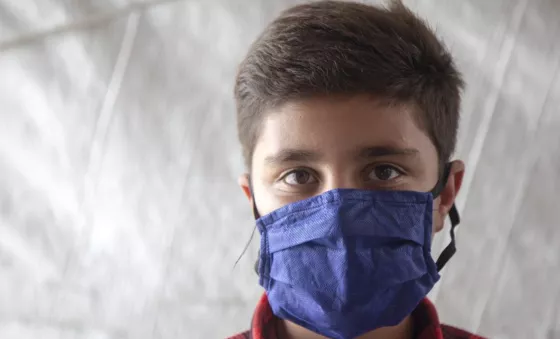War Child UK, the charity for children affected by conflict, today 14 July 2020 releases its new report on the impacts of the current coronavirus pandemic on children and their families in war affected countries.
The report Covid-19 in fragile humanitarian contexts: impacts of the pandemic on children features interviews and case studies from Afghanistan, the Central African Republic, Iraq and Yemen and shows a repeating picture across continents. Local governments’ preventative measures, albeit in good faith, have forced many families out of work leaving them penniless and facing starvation as they are unable to afford the hiked price of key food items. Schools have been closed, in many cases, since February. According to War Child the absence of access to schools is one of the biggest factors leading to increased reports of children’s rights violations. Children are increasingly being forced to work, including the worst forms of child labour (e.g. mining), child marriage is expected to rise and there are concerning reports of increases in sexual exploitation of children, including in exchange for basic goods and money. The mental health impacts caused by the increased uncertainty is coupled with the strains of living in a war zone as live attacks and bombings are continuing in Yemen, Iraq and Afghanistan. Meanwhile there’s been an increase in reported recruitment of children into armed groups in the Central African Republic and it’s expected to rise in Yemen.
In these conflict countries, health infrastructure is incredibly limited. For example the Central African Republic has three ventilators to serve a population nearing five million. Similarly in Iraq there is a shortage of skilled health workers with the Ministry of Health estimating 20,000 doctors leaving the country with now only 0.8 doctors available per 1,000 people. Stark warnings of potential surges in cases mean many countries have imposed strict lockdown measures which, while they might be stemming the spread of the disease, are having catastrophic consequences for those living in weaker economies.
As restrictions begin to ease across Europe, many countries with fragile settings are maintaining their lockdowns leaving millions of children out of school without access to food, healthcare and other essential services. War Child is calling on the UK government and the international community to prevent disaster by increasing funding to respond to this children’s emergency and ensuring humanitarian aid isn’t further hindered by lockdown measures.
War Child UK CEO, Rob Williams OBE said:
“We are seeing children being stripped of their rights at terrifying rates as multiple factors collide to cause catastrophe. The coronavirus must not be seen as only a health crisis. This is a children’s emergency which could yet prove to be the world’s most deadly humanitarian disaster. As we are beginning to beat the virus in the UK we must not turn our backs on the millions of children whose futures hang in the balance.
Unless we can achieve a rapid resumption of education and children protection services the knock-on effects of the lockdowns seem set to permanently disadvantage an entire generation of children.
While restrictions on gatherings and movements are needed to contain the virus, urgent support is needed to maintain child protection services and ensure the continued provision of humanitarian aid including providing child protection, education and psychosocial support. There must be increased funding to help those with no income and provide life-saving health, food, water and sanitation without movement restrictions."
War Child’s key recommendations:
-
Unfettered access for humanitarian aid through lockdown
-
Sufficient funding from donors to child protection services and education
-
Provision of psychosocial support and the mental health services
-
Ensuring health, food and sanitation needs are met
-
Unanimous support for a global ceasefire
-
Consult children and their families about decisions relating to the response ensuring they are engaged in the design and implementation of plans

